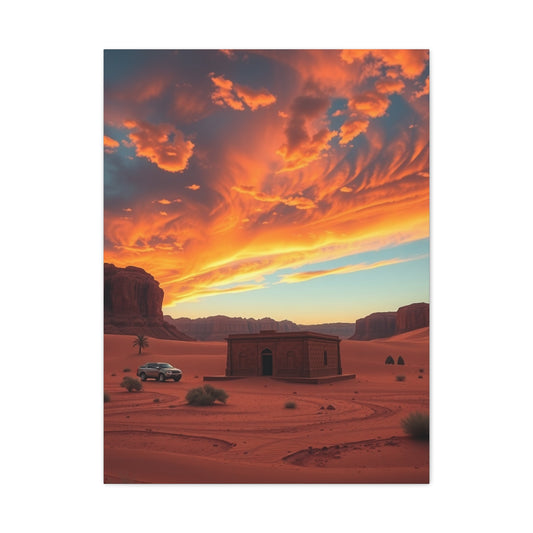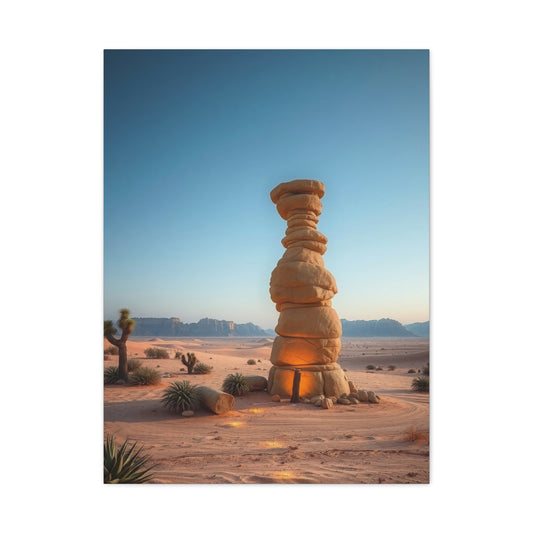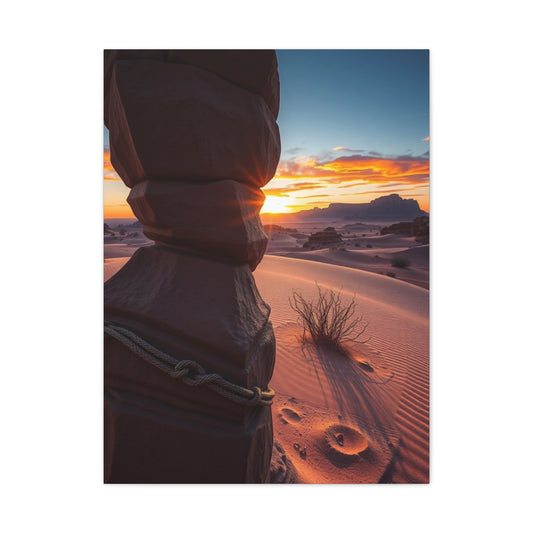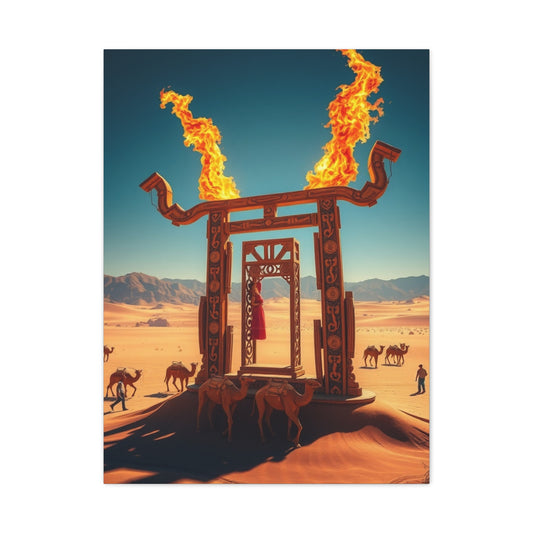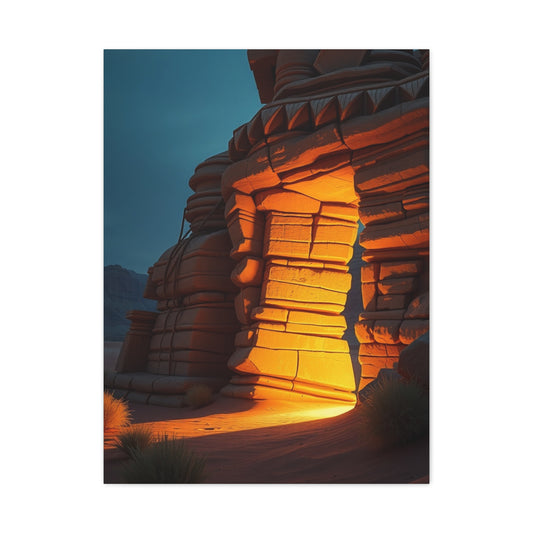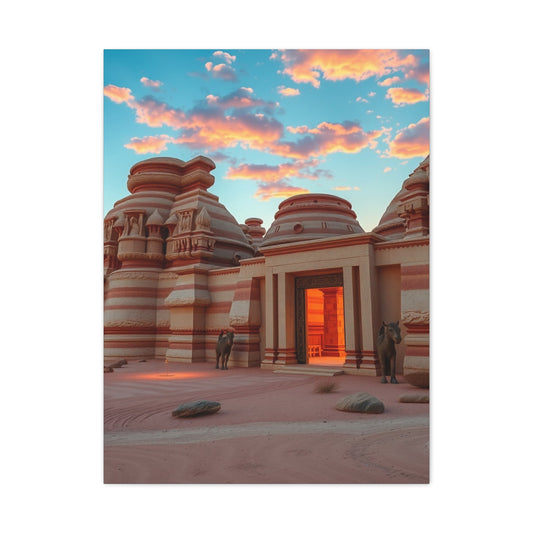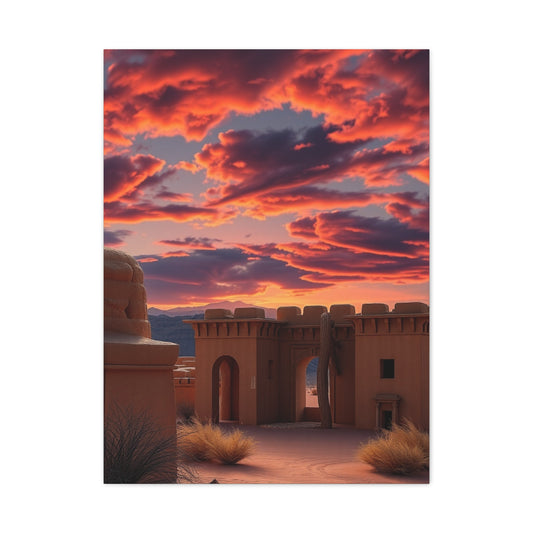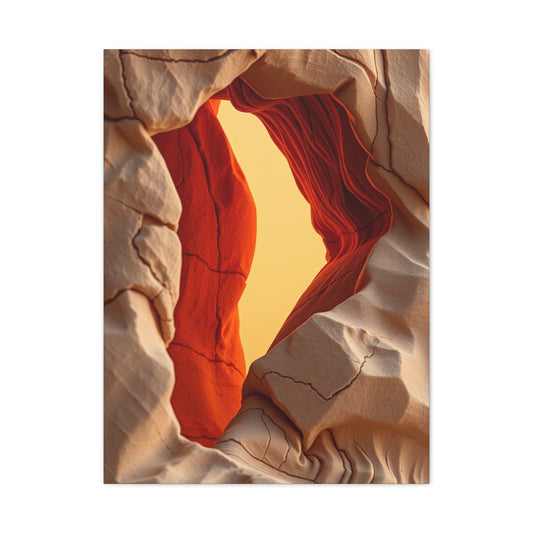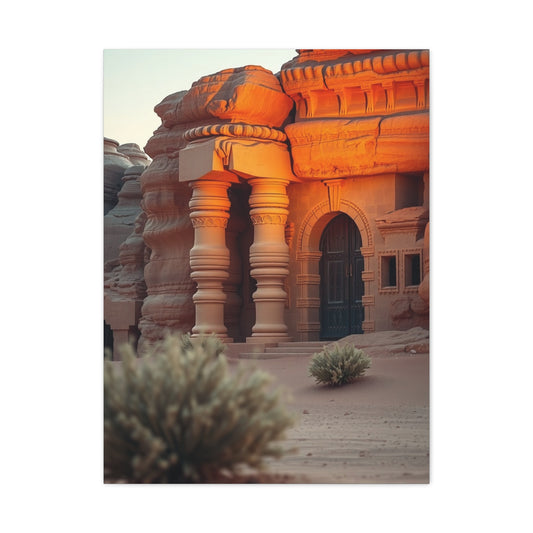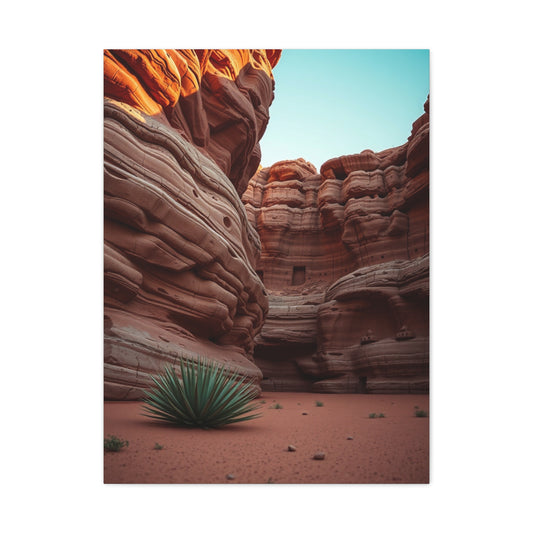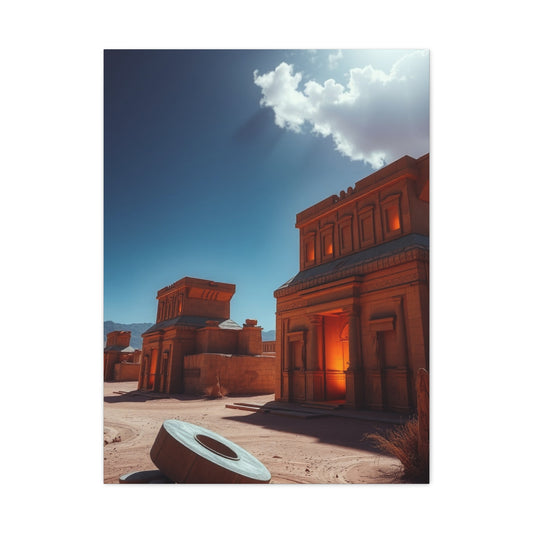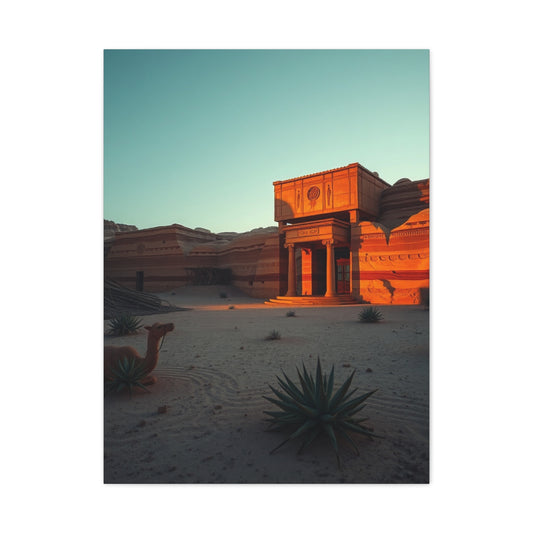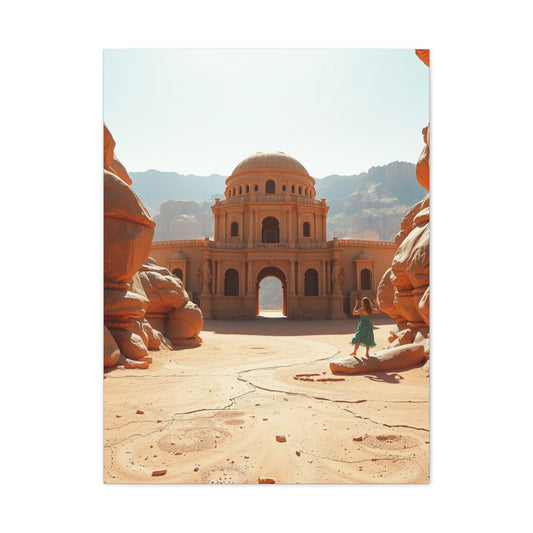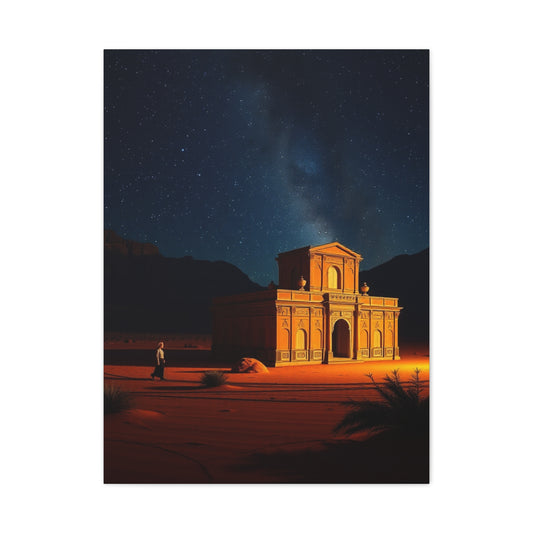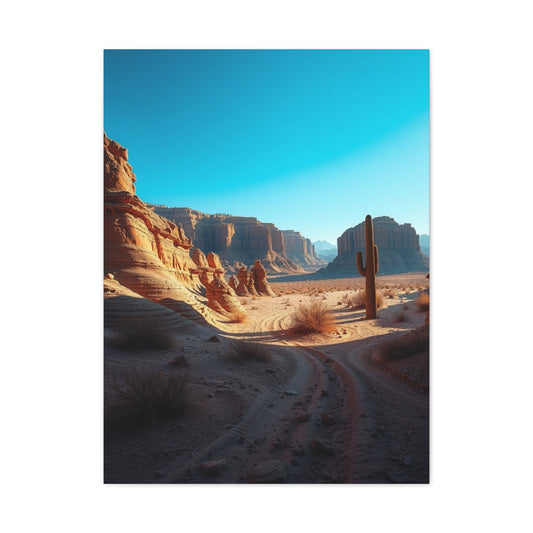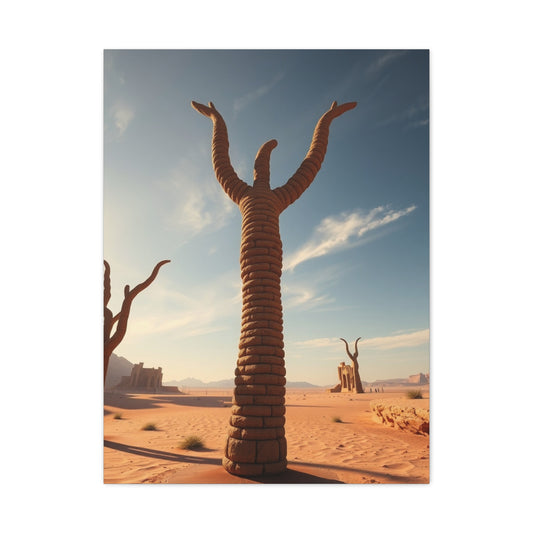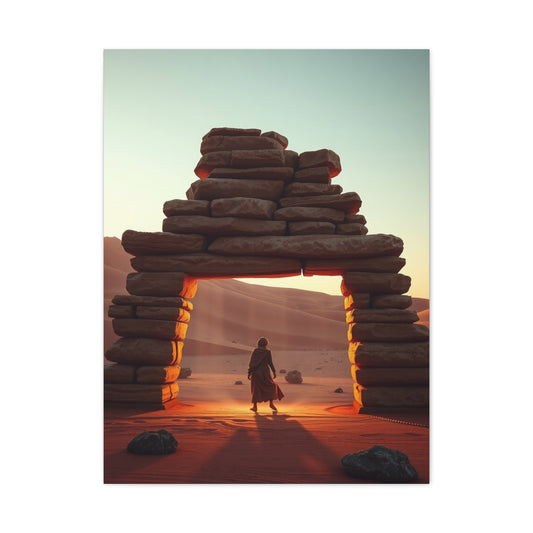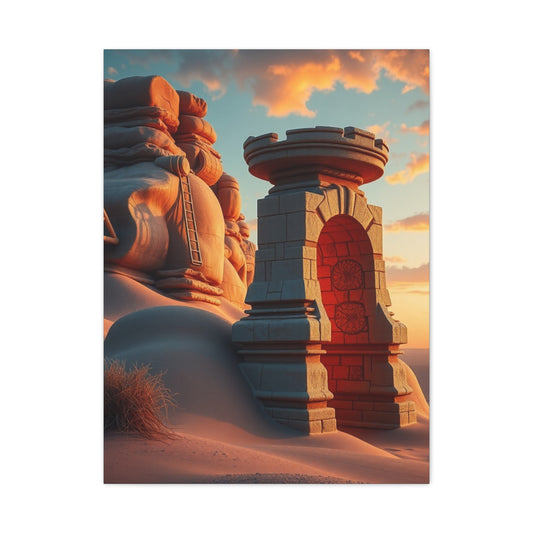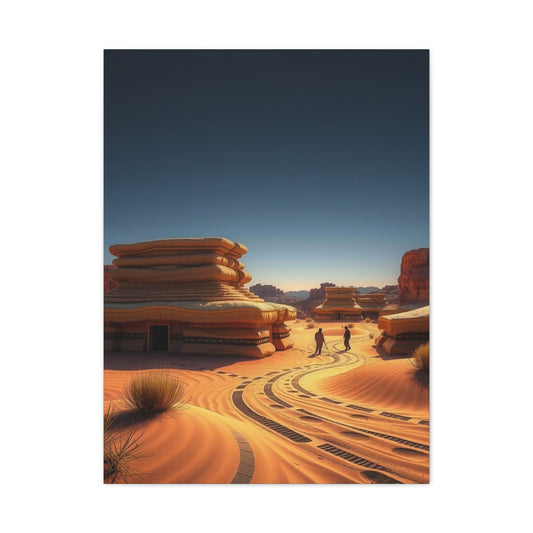Desert Wall Decor Ideas to Create a Calming Atmosphere
The desert is often thought of as an empty, barren place, yet those who take time to observe it more closely see something entirely different. It is a land of striking beauty, filled with luminous sunsets, unique geological formations, resilient plants, and an unparalleled sense of stillness. Translating this beauty into an interior space requires thought, imagination, and a willingness to embrace natural imperfection. Desert wall decor provides a canvas to achieve this, offering a way to merge rugged natural elements with a refined sense of design. By focusing on artwork, color, and atmosphere, anyone can create a living environment that evokes both serenity and character.
The Allure of Desert-Inspired Artwork
The simplest and often most impactful way to bring desert energy indoors is through artwork. Paintings, photography, and hand-crafted visuals tell stories of sun-baked landscapes and enduring flora. These pieces are not simply decoration but reminders of resilience and calm, carrying within them the spirit of places where life thrives against the odds.
Photography often captures the desert’s grandeur in ways that paint cannot replicate. Panoramic views of rolling sand dunes, the stark symmetry of a cactus silhouetted against twilight, or the glittering horizon under a blazing sun can all become powerful focal points in a room. A single framed photograph can ground an entire wall, encouraging reflection and contemplation.
Abstract art provides another way to interpret the desert. Instead of depicting landscapes literally, artists may use bold brushstrokes in shades of terracotta, ochre, and muted green to evoke the feeling of a desert without any direct imagery. These pieces often carry a sense of movement, mimicking shifting sands or heat waves rising from the earth. For interiors that lean toward modern or minimalist styles, abstract desert art fits beautifully while still tying back to nature.
Hand-painted canvases or murals often lean into more direct representations of desert flora and fauna. Cacti, succulents, desert foxes, or stylized sunset horizons can be brought to life in ways that blend realism with artistry. These visuals serve as constant reminders of nature’s diversity, even in landscapes that at first glance appear stark.
Choosing Subjects for Wall Decor
Selecting subjects for wall decor inspired by the desert depends on the mood one wishes to cultivate. For tranquility, wide desert landscapes bathed in soft peach or pale lavender hues are ideal. For vibrancy and energy, fiery sunset scenes or bursts of blooming desert flowers can brighten up a space.
Some may prefer symbolic imagery, such as the solitary cactus standing tall in a vast open plain. This form of art carries connotations of resilience, independence, and endurance. Others might gravitate toward more intricate imagery like desert rock formations, weathered cliffs, or canyons, each offering texture and depth that stimulates the imagination.
Mixing different art styles can also be powerful. For instance, pairing a detailed photograph of a desert canyon with an abstract painting in similar tones creates a dialogue between realism and interpretation. The wall becomes not just decorated but curated, with pieces that speak to one another across styles.
The Role of Color in Desert Decor
Color is a powerful tool in any interior design, and desert-inspired spaces thrive on palettes that reflect the natural environment. Earthy terracotta shades echo sunbaked clay and pottery. Soft peach tones recall evening skies, while muted greens resemble resilient plants that manage to flourish in arid conditions.
These colors are not merely aesthetic; they carry emotional resonance. Warm terracotta invokes a sense of grounding and stability. Peach tones introduce gentleness and calm. Muted sage greens create balance and a subtle reminder of growth and renewal. Together, they produce harmony and depth within a room.
Walls painted in desert hues form the perfect backdrop for artwork and wall hangings. A large abstract painting on a sandy beige wall feels more integrated than on stark white. Likewise, a photograph of desert rocks framed against a pale sage background enhances the connection between interior and exterior landscapes.
It is also worth considering contrast. Bold desert oranges or deep red-brown tones work well as accent walls, adding drama without overwhelming the space. When paired with lighter neutral shades on adjacent walls, these colors bring richness and variety to the interior.
Atmosphere Through Simplicity
One of the defining aspects of desert landscapes is their vast openness. This quality can be translated into interiors by embracing simplicity and avoiding unnecessary clutter. Desert wall decor works best when it is given room to breathe, much like the wide-open spaces it seeks to evoke.
A single oversized canvas can make more impact than a crowded gallery wall. Similarly, a carefully chosen textile hanging in earthy tones can create more atmosphere than multiple small decorations combined. Allowing negative space around desert-inspired artwork is crucial, as it mirrors the expansive horizons of the natural environment.
Lighting also plays an important role in cultivating atmosphere. Warm-toned lighting that mimics natural sunlight highlights the earthy hues of desert art. Spotlights placed above large wall hangings can create shadows reminiscent of desert cliffs at sunset. The interplay of light and shadow adds to the sense of depth and serenity.
The Subtle Power of Texture
While color and imagery provide the first layer of visual appeal, texture deepens the sensory experience. In the desert, surfaces vary dramatically—smooth stones, rough sand, and weathered wood all coexist. Bringing these textures indoors through wall decor enriches the overall atmosphere.
Macrame hangings in natural fibers bring softness while echoing the hand-crafted traditions of desert communities. Woven wall panels or baskets introduce both visual and tactile appeal. Clay reliefs or plaster carvings mounted on walls can capture the rugged essence of rock faces or wind-carved patterns in sand.
Even artwork itself can carry textural depth. Thickly layered paint on a canvas may mimic the roughness of stone, while mixed-media pieces combining wood, clay, and fabric embody the desert’s diversity of materials. Such pieces do not simply hang on the wall but invite closer inspection, encouraging touch as well as sight.
The Emotional Dimension of Desert Decor
Beyond its visual qualities, desert wall decor also shapes emotional responses. There is something deeply restorative about desert imagery. Unlike bustling cityscapes or dense forests, deserts represent stillness. Their wide horizons and uncluttered landscapes invite contemplation and calm.
In a home, this translates to a sanctuary-like atmosphere. Sitting in a room adorned with desert-inspired art can feel meditative, offering quiet moments even in a busy household. This is especially powerful in living rooms, bedrooms, or study spaces where mental clarity and relaxation are valued.
Desert wall decor also tells a story of resilience. The cactus growing against all odds, the windswept dunes shifting endlessly, or the stones weathered by centuries of sun and sand remind us of endurance and adaptability. Having such imagery in the home can serve as a daily source of inspiration.
Integrating Desert Decor with Different Styles
While desert wall decor is naturally aligned with rustic and bohemian interiors, it can complement a variety of styles. In modern minimalist spaces, abstract desert art brings warmth and personality without disrupting clean lines. In eclectic interiors, desert textiles and colorful canvases add layers of vibrancy and cultural richness.
Even traditional spaces can benefit from desert influences. Framed desert photographs in simple wooden frames sit well alongside classic furniture, while muted desert color palettes blend seamlessly with more conventional decor. The adaptability of desert-inspired art makes it a versatile choice for diverse homes.
Curating a Personal Desert Aesthetic
Ultimately, the success of desert wall decor lies in personal expression. The desert means different things to different people: for some, it is a place of solitude; for others, it is a land of vibrant life. By curating wall decor that resonates with individual experiences and aspirations, one creates not just a decorated space but a deeply personal environment.
Some may be drawn to minimalist desert landscapes with soft colors and simple lines. Others may prefer bold, colorful representations bursting with energy. The key is to choose pieces that feel authentic, aligning with both the home’s architecture and the dweller’s sense of self.
Desert wall decor is more than a design trend; it is an artistic language that captures the essence of nature’s most enigmatic landscape. Through careful use of artwork, thoughtful color palettes, and mindful attention to atmosphere, it is possible to transform walls into living testaments of desert beauty. Whether through striking photography, abstract interpretations, or textured hand-crafted pieces, each choice brings a part of the desert indoors, inviting stillness, resilience, and inspiration into everyday life.
Textures and Elements: Bringing the Desert Indoors Through Material and Craft
The desert is often seen as a land of contrasts. Its landscapes are shaped not only by vast horizons but also by the tactile details of rock, sand, and plant life. To capture the true spirit of the desert within the home, wall decor should go beyond imagery alone. Texture and material play a critical role in creating authenticity, depth, and atmosphere. By incorporating woven crafts, natural surfaces, and elemental artistry, one can build interiors that feel both grounded and dynamic. Desert wall decor thrives on tactile expression, echoing the raw and organic essence of arid landscapes.
The Importance of Texture in Desert Wall Decor
Texture is often overlooked in design, yet it is the element that makes a room feel alive. While color appeals to the eyes, texture appeals to both sight and touch, adding a dimension that cannot be replicated by flat surfaces. In the desert, this variety is everywhere. Jagged rocks contrast with smooth sand, cacti bristle with spines, and dried grasses sway with subtle patterns. Translating these qualities into wall decor brings the desert indoors in a way that feels immersive and natural.
Macrame, woven textiles, and hand-crafted pieces are common choices, but texture can also emerge from the interplay of wood, clay, stone, and metal. Each material tells its own story, much like each desert surface reveals the history of weather, erosion, and survival. A room adorned with textured wall decor feels warmer, more inviting, and more connected to nature.
Woven Art and Traditional Craftsmanship
Woven wall hangings have become a signature element of desert-inspired interiors, and for good reason. They embody both artistry and functionality, with roots in traditional craftsmanship. A woven textile displayed on the wall instantly recalls the patterns and colors of desert life, from earthy ochres to muted greens.
Macrame wall hangings in natural cotton or jute can drape beautifully, their knots forming intricate designs that echo organic desert shapes. These pieces work particularly well against smooth, painted walls, where their depth and movement stand out. Larger woven panels can serve as central pieces, while smaller hangings can be grouped together for a layered effect.
Baskets, another form of woven art, also make striking wall displays. Arranged in clusters, they introduce circular motifs reminiscent of the sun or the rolling curves of dunes. Their earthy tones and natural fibers evoke authenticity, grounding interiors with a sense of place and tradition.
The Appeal of Wood and Driftwood
Wood brings warmth and grounding to interiors, making it a natural fit for desert-inspired wall decor. Driftwood in particular, shaped by time and water, reflects the natural weathering processes that also shape desert stones and canyons. Mounted driftwood pieces or wall sculptures crafted from reclaimed wood can bring organic forms to life within a home.
Carved wooden panels provide another way to incorporate texture. Designs inspired by desert flora, sunbursts, or geometric motifs create an atmosphere that blends natural beauty with artistic refinement. Even simple wooden shelves holding small desert-themed objects can double as decor, adding dimension while highlighting natural grains and tones.
In desert wall decor, the key is to maintain balance. Wooden pieces should complement, not overwhelm, other elements. Their rawness should echo the environment rather than dominate it, blending with woven textures, clay, and soft desert colors.
Clay and Earthen Materials
Clay is one of the most evocative materials when it comes to desert-inspired design. Its warm tones and natural imperfections align perfectly with desert aesthetics. Clay wall art can take many forms, from hand-sculpted tiles to relief carvings depicting plants, animals, or abstract desert motifs.
Hanging clay plates or terracotta tiles as wall arrangements adds both texture and history to interiors. The slight irregularities in shape and color reflect the organic unpredictability of the desert. Clay also resonates with traditions of desert cultures, where it has long been used for building, art, and ritual objects.
Earthen plasters or textured clay wall finishes provide an even broader canvas. These wall treatments mimic the rugged feel of desert cliffs and rock surfaces, creating a backdrop that feels natural and timeless. With their subtle variations in tone, they add depth that plain paint cannot achieve.
The Role of Stone and Rock
Desert landscapes are defined by their geological features. Massive boulders, layered canyons, and windswept formations carry the memory of millennia. Bringing stone into wall decor captures this essence, anchoring interiors with solidity and endurance.
Stone can be incorporated in multiple ways. Decorative stone panels or slices mounted as art can reflect the natural striations and mineral colors of desert formations. Smaller stones can be embedded into wall mosaics, creating tactile surfaces that echo the irregularity of desert terrain.
Rock-inspired art also works well. Sculptural pieces that mimic the shapes of desert stones, when mounted on walls, act as natural focal points. These elements remind viewers of the quiet majesty of places where rock and sand dominate, celebrating the rawness of earth itself.
Metal Accents in Desert Decor
Although stone and wood dominate desert imagery, metal also plays a subtle but powerful role. The desert sun often glints off mineral surfaces, creating flashes of brilliance. Incorporating metallic accents into wall decor reflects this quality.
Iron wall art, hammered copper panels, or bronze sculptures can all be adapted into desert-inspired interiors. Their rugged textures and earthy patinas mirror the mineral richness of desert soil. When paired with softer materials like woven hangings or clay tiles, metal provides striking contrast while maintaining harmony.
Careful use of metallic tones—especially aged or weathered finishes—ensures that they complement rather than overpower the natural palette. A brushed bronze wall hanging or rust-toned iron sculpture can evoke the feel of desert sunsets, where golden light turns everything into glowing silhouettes.
Textiles and Desert Symbolism
Textiles have long been a medium for storytelling, and desert-inspired textiles are no exception. Wall hangings that incorporate desert symbols—cacti, suns, stars, or stylized dunes—carry not only aesthetic beauty but also meaning. Traditional patterns often use geometric motifs that echo the lines of sand dunes or the symmetry of succulents.
Fabrics in muted colors such as soft peach, sandy beige, or sage green make excellent wall hangings. These pieces may be dyed naturally, incorporating plant-based pigments that deepen the connection to the desert. By choosing textiles with subtle patterns and earthy textures, walls gain a quiet richness that aligns perfectly with desert-inspired design.
Blending Natural and Artistic Elements
Desert wall decor is at its most effective when natural materials are combined with artistry. For example, a woven wall hanging may incorporate clay beads, or a wooden panel may feature carved cactus motifs. Blending mediums not only enhances visual appeal but also reflects the layered diversity of the desert itself.
Shadow boxes filled with natural elements such as sand, stone, or dried desert flora can be arranged as art. A cactus skeleton, carefully preserved and framed, becomes both sculpture and specimen, celebrating the resilience of desert plants. Even simple collections of rocks or crystals, mounted thoughtfully, can become unique wall features.
By combining the raw with the refined, interiors gain authenticity while still maintaining design sophistication.
Atmosphere Through Material Choices
Every material contributes to the atmosphere of a space. Woven textiles create softness, clay adds warmth, stone conveys solidity, wood offers grounding, and metal introduces subtle brilliance. Choosing the right combination depends on the intended mood of the room.
For a calming, meditative space, woven hangings and muted clay tiles might dominate. For a dynamic, energetic atmosphere, stone mosaics paired with bold desert colors could be emphasized. By considering how each material influences perception, homeowners can craft interiors that resonate emotionally as well as visually.
Minimalism and Negative Space
When working with textured wall decor, restraint is as important as variety. Overcrowding walls with too many elements diminishes their individual impact. The desert teaches the value of negative space—wide stretches of sand or open sky that highlight the few details within them.
In interiors, this principle translates to careful placement. A single dramatic clay relief on a blank wall can feel more powerful than multiple smaller decorations. Similarly, a driftwood sculpture given space around it mirrors the isolation of desert landmarks, where a lone formation can dominate the horizon.
Minimalism not only highlights the chosen textures but also aligns with the desert’s quiet, contemplative nature.
Emotional Resonance of Crafted Elements
Handcrafted wall decor carries emotional weight, as it reflects time, effort, and tradition. Unlike mass-produced items, woven, carved, or sculpted pieces bear the imprint of their makers. This personal touch resonates with the desert’s own handmade quality, shaped by wind, sun, and time.
Living with such elements creates a deeper connection to space. A woven textile might remind one of the resilience of desert plants, while a clay panel may evoke ancient landscapes. These emotional layers transform interiors from mere living spaces into meaningful environments.
Texture and material are the heart of desert wall decor. By integrating woven art, wood, clay, stone, metal, and textiles, one creates interiors that mirror the desert’s richness and resilience. Each element contributes its own voice: the softness of fiber, the solidity of stone, the warmth of clay, the grounding of wood, and the brilliance of metal. When combined thoughtfully, they form an atmosphere that is both raw and refined, capturing the essence of the desert indoors.
Botanical Inspirations: Succulents, Cacti, and Natural Green Touches for Your Walls
The desert is more than sand and stone. It is also home to plants that have learned to thrive where water is scarce and conditions are harsh. These plants—succulents, cacti, and other drought-resistant flora—are not only resilient but also stunningly sculptural. Their forms, colors, and textures have inspired countless works of art and design. Bringing these botanical elements indoors is one of the most powerful ways to capture the spirit of the desert. When used as wall decor, they provide freshness, vibrancy, and a subtle reminder of life’s ability to flourish under challenging circumstances.
The Symbolism of Desert Plants
Succulents and cacti have long been admired not only for their beauty but also for what they represent. Their ability to endure harsh climates makes them symbols of perseverance, adaptability, and self-sufficiency. Having these plants incorporated into wall decor allows their symbolism to enrich the atmosphere of a room.
Cacti, with their strong spines and dramatic silhouettes, speak of resilience and strength. Succulents, with their fleshy leaves and intricate patterns, symbolize quiet beauty and natural abundance. Together, they form a living language of survival and harmony that resonates deeply with those who admire the desert landscape.
These qualities make desert plants more than decorative choices. They become reminders of patience, endurance, and balance, qualities that many seek to cultivate in their homes.
Living Wall Displays
One of the most captivating ways to bring desert plants into interior design is through living wall displays. A vertical garden featuring succulents and cacti can transform a plain wall into a vibrant canvas. These installations combine natural beauty with architectural elegance, merging greenery with design.
Living walls can be created using modular planters, wall-mounted shelves, or custom-built frames. Succulents are especially suited for these arrangements because of their compact size and low maintenance requirements. They thrive in shallow soil and need only occasional watering, making them practical for indoor spaces.
The arrangement of plants within a living wall can follow patterns inspired by desert landscapes. Layers of succulents in shades of green, blue-gray, and burgundy can mimic the variety found across arid terrain. Cacti with different heights and forms add drama, creating focal points within the display.
Lighting is crucial for living wall installations. Natural light near a window is ideal, but if that is not possible, grow lights can ensure that plants remain healthy. The combination of lush plant life and thoughtful illumination brings an ever-changing vitality to interiors.
Framed Plant Arrangements
For those who want to incorporate real desert plants without the commitment of a full living wall, framed plant arrangements are a versatile alternative. Shadow boxes or deep frames can be filled with succulents, creating living artwork that hangs on the wall. These pieces function like paintings but carry the freshness of live greenery.
Some framed arrangements use preserved plants rather than living ones. Preserved moss, dried succulents, and cactus skeletons maintain their form and color without requiring care. These frames offer the visual appeal of natural plants while remaining entirely maintenance-free.
Artificial arrangements have also become highly sophisticated, often mimicking the look of real succulents and cacti with remarkable accuracy. While they do not carry the living energy of actual plants, they still provide color and structure, making them suitable for spaces where natural light is limited.
Pressed Botanical Art
Pressed botanical art is another way to celebrate desert flora on the walls. Leaves, flowers, and small succulents can be pressed, dried, and arranged into framed compositions. These artworks highlight the delicate structure of plants, turning them into intricate designs that feel timeless.
Pressed desert flowers, with their muted yet vibrant colors, can bring subtle beauty to interiors. Framed cactus blooms, though rare and seasonal, make striking displays. Because each piece is unique, pressed botanical art carries a sense of authenticity and individuality.
This form of wall decor connects the viewer to the fleeting beauty of desert blooms, which often last only a short time in nature. Preserving them in art extends their life and allows their quiet radiance to enrich interiors year-round.
Stylized Illustrations and Botanical Prints
Not all plant-inspired wall decor needs to involve actual plants. Stylized illustrations, prints, and paintings of succulents and cacti can be equally powerful. These artistic interpretations range from minimalist line drawings to highly detailed watercolors.
Line art offers a simple, elegant way to suggest the form of a cactus or succulent without overwhelming detail. These pieces work well in modern or minimalist interiors, where clean lines and subtle imagery are valued.
More detailed prints, on the other hand, can showcase the intricate textures and patterns of desert flora. Watercolors that capture the subtle shifts in hue across succulent leaves bring delicacy and depth to walls. Large canvas paintings of desert plants can serve as dramatic focal points, emphasizing the sculptural beauty of cacti.
Integrating Greenery with Functional Decor
Desert plants can also be integrated into functional wall elements. Wall-mounted shelves, for example, can hold small pots of succulents, blending decor with utility. Arranging shelves in geometric patterns creates visual rhythm, while the plants themselves add organic variation.
Hanging planters are another creative option. Ceramic or clay vessels suspended from the ceiling or wall-mounted brackets can hold cascading succulents, their trailing leaves softening sharp architectural lines. These arrangements not only decorate walls but also blur the boundary between architecture and nature.
By integrating greenery into functional features, interiors feel more alive and dynamic, without compromising practicality.
The Role of Color in Botanical Wall Decor
Desert plants bring with them a distinct palette of colors that can transform interiors. Succulents often carry shades beyond simple green, ranging from soft blues and silvers to deep purples and burgundies. Cacti, too, surprise with their colorful blooms—brilliant reds, yellows, and pinks that burst from spiny stems.
In wall decor, these colors create vibrancy and variety. A framed arrangement of succulents introduces subtle gradients that shift with light. Pressed cactus flowers bring sudden brightness to otherwise muted spaces. Even stylized illustrations can highlight unusual colors, drawing attention to the diversity of desert flora.
When paired with desert-inspired wall colors such as terracotta, peach, or muted sage, these botanical hues create harmony. The combination feels organic, as though the walls themselves form part of a larger desert landscape.
Texture and Shape in Botanical Decor
Plants are as much about shape and texture as they are about color. Succulents display geometric patterns that appear almost mathematical, with leaves spiraling in precise arrangements. Cacti, by contrast, have bold vertical forms, ridges, and spines that create striking silhouettes.
Wall decor that incorporates these forms emphasizes their sculptural quality. A mounted cactus skeleton, with its intricate lattice-like structure, becomes both art and artifact. A shadow box filled with succulents highlights their rosette forms, inviting close inspection.
Textures also play an important role. The fleshy leaves of succulents contrast beautifully with rough clay pots or wooden frames. Spiny cactus forms stand out against smooth, painted walls. These juxtapositions make interiors more engaging, encouraging tactile as well as visual appreciation.
Low-Maintenance Alternatives
While living desert plants bring unmatched vitality, they also require care. For those who prefer low-maintenance solutions, alternatives exist that still honor the desert aesthetic. High-quality artificial plants, preserved botanical displays, or even stylized representations can achieve much of the same atmosphere without ongoing upkeep.
Artificial succulents and cacti, when chosen carefully, can be nearly indistinguishable from the real thing. They are especially useful in spaces without natural light or in homes where regular plant care is not practical. Preserved displays, which use treated natural plants, retain authenticity without requiring water or sunlight.
Stylized art, whether photographic or illustrative, carries the spirit of desert plants without involving any maintenance at all. These options allow everyone to enjoy botanical wall decor, regardless of lifestyle or environment.
Emotional Impact of Green Touches
Bringing plants into interiors has psychological benefits, even when those plants are minimal or stylized. Greenery is known to promote calm, reduce stress, and improve concentration. Desert plants, in particular, carry the additional symbolism of endurance and strength.
A wall adorned with succulents or cactus art becomes more than decorative—it becomes restorative. These elements create micro-moments of connection to nature, which are increasingly valuable in fast-paced modern life. Even a single framed succulent arrangement can change the mood of a room, shifting it toward balance and tranquility.
Combining Botanical Elements with Other Desert Decor
Botanical wall decor works beautifully when paired with other desert-inspired elements. A woven wall hanging alongside framed succulents creates both texture and life. Clay pots mounted on walls can hold small cacti, blending earthy materials with living greenery. Photographs of desert landscapes can be enhanced by adjacent displays of actual plants, uniting representation with reality.
These combinations enrich interiors by layering meaning and texture. They remind viewers that the desert is not only vast and rugged but also filled with delicate life. The dialogue between plants and other materials—wood, clay, stone—mirrors the natural interplay found in desert environments.
Botanical inspirations breathe life into desert wall decor. Succulents, cacti, and preserved or stylized plant arrangements connect interiors with the vitality of the natural world. Whether through living walls, framed displays, pressed botanical art, or illustrations, these elements capture both the beauty and resilience of desert flora. Their forms, colors, and textures enrich interiors, creating spaces that feel vibrant, harmonious, and deeply rooted in the natural environment. By integrating desert plants into wall decor, one not only enhances aesthetics but also invites the enduring spirit of the desert into everyday life.
Creating Harmony: Color Palettes, Natural Accents, and Styling Ideas for a Desert-Inspired Home
The desert has always been a place of paradoxes. It is vast yet intimate, harsh yet delicate, still yet alive with quiet rhythms. Bringing its spirit indoors is not simply a matter of decoration but of harmony—of finding the right balance between color, natural accents, and styling choices. Desert wall decor thrives when it blends hues inspired by sun and sand with textures and artifacts that feel authentic. When these elements are woven together thoughtfully, interiors transform into sanctuaries that echo the timeless beauty of arid landscapes.
The Emotional Power of Desert Color Palettes
Colors are not just visual choices; they carry moods, memories, and meanings. Desert-inspired color palettes, drawn from earth and sky, create a sense of warmth, calm, and rootedness. Terracotta, with its rich reddish-brown undertones, evokes the clay of ancient pottery and sunbaked soil. Peach and coral shades reflect twilight horizons, while muted sage greens bring to mind the leaves of hardy desert plants.
Each of these colors carries emotional weight. Terracotta grounds a room, making it feel stable and welcoming. Peach tones soften spaces, creating comfort and intimacy. Sage green introduces freshness and balance, linking interiors to the quiet resilience of desert flora. Together, they form a palette that is at once earthy and refined, rustic and elegant.
A wall painted in one of these hues becomes more than a backdrop; it becomes part of the story of the space. It interacts with the decor placed upon it, amplifying the impact of artwork, textures, and accents. When chosen carefully, colors create the harmony that allows desert wall decor to resonate fully.
Subtle Variations and Layering
The beauty of desert color palettes lies in their subtle variations. Sand, for example, is not a single shade but a spectrum ranging from pale ivory to golden brown. Rocks shift from gray to red depending on mineral content and the angle of sunlight. Sky tones move from piercing blue at noon to dusty lavender at dusk.
In interiors, layering these variations creates depth. A wall painted in muted beige may be accented with terracotta frames, while textiles introduce shades of peach and rust. Succulent arrangements add hints of soft green, and stone accents bring in gray or cream tones. Together, these layers mimic the richness of a desert landscape, where no surface is uniform but every surface belongs to a greater whole.
Accent Walls and Painted Features
Accent walls are particularly effective in desert-inspired spaces. Painting one wall in a bold desert hue, such as deep terracotta or burnt sienna, creates a strong focal point without overwhelming the room. The remaining walls in softer tones balance the intensity, producing both energy and calm.
Painted features can also extend beyond entire walls. A recessed alcove in sage green, a painted border in soft peach, or a geometric mural in desert tones can add interest. These choices give walls dimension, echoing the natural contrasts of cliffs and canyons.
By incorporating painted accents, one creates a dialogue between walls and decor. The colors do not merely support the artwork but become part of the artwork themselves.
The Role of Natural Accents
Color alone cannot capture the desert’s essence. Natural accents—objects drawn from or inspired by the desert environment—complete the vision. Stones, sand, driftwood, shells, crystals, and even dried plants bring authenticity, grounding interiors in the tangible qualities of the desert.
Bowls filled with smooth stones or layered sand become small shrines to simplicity. Crystals and geodes, with their luminous interiors, echo the mineral wealth of desert terrain. Driftwood, collected from desert lakes or rivers, adds organic forms shaped by time.
These accents can be displayed on shelves, mounted in shadow boxes, or arranged as wall art. Their textures and forms provide variety, ensuring that interiors do not rely solely on imagery but also on materiality. They become reminders that beauty lies not just in sweeping views but also in the details of a single rock, shell, or branch.
Styling with Dried Flora
Dried plants are particularly evocative in desert-inspired decor. They reflect the natural cycle of life in arid environments, where blooms may be brief but their forms endure. Pampas grass, dried agave leaves, or desert flowers can be arranged in wall-mounted vessels or framed displays.
The muted tones of dried flora complement desert color palettes, blending seamlessly with terracotta, peach, and beige. Their textures, whether feathery, spiky, or fibrous, add depth and variety. Unlike living plants, they require no care, making them practical as well as beautiful.
By styling walls with dried flora, interiors achieve a balance between vitality and permanence, reflecting the desert’s enduring spirit.
Integrating Functional Decor with Style
In many homes, decor must serve both aesthetic and functional purposes. Desert-inspired design embraces this by incorporating natural accents into practical features. Wall-mounted shelves can hold both books and small desert artifacts. Clay sconces can provide lighting while adding earthen texture. Hooks and racks made of driftwood combine utility with artistry.
Even simple elements, such as woven baskets mounted on walls, can serve as both storage and decor. They bring texture and authenticity while remaining useful. This approach ensures that desert-inspired styling does not feel superficial but rather integrated into the rhythms of daily life.
Light and Shadow as Styling Tools
The desert is defined by light. Sunlight shifts dramatically throughout the day, casting long shadows that change the character of rocks, plants, and sand. Bringing this quality indoors requires thoughtful use of lighting.
Warm-toned bulbs replicate the glow of desert sunsets. Spotlights directed at wall decor create shadows that mimic the play of light across desert landscapes. Candles and lanterns introduce a softer, flickering quality, evoking nights under the open desert sky.
By styling walls with both light and shadow, interiors capture the dynamic essence of the desert. The decor does not remain static but changes with illumination, just as the desert itself changes with the sun.
Combining Materials for Harmony
Harmony in desert-inspired interiors comes from combining different materials. Wood, clay, stone, and fabric each carry distinct qualities, but together they form a cohesive narrative. A terracotta tile beside a woven textile, or a driftwood sculpture above a clay pot, mirrors the diversity of the desert while maintaining unity.
The key lies in balance. Too much stone may feel cold; too much fabric may feel heavy. When blended thoughtfully, however, these materials create rhythm and flow. Each accent supports the others, forming a space that feels both organic and intentional.
Personal Expression in Desert Styling
No two deserts are the same, and no two desert-inspired homes should be either. Styling choices should reflect personal experiences and interpretations of desert landscapes. For some, this might mean emphasizing fiery colors and bold artwork. For others, it may involve muted tones, minimal decor, and quiet textures.
Personal collections can play a role here. Stones picked up during travels, handmade pottery, or photographs taken on desert hikes can become part of wall decor. These personal touches add authenticity, transforming design into storytelling.
When interiors reflect both the spirit of the desert and the personality of the dweller, they achieve true harmony.
Minimalism and Spaciousness
Desert-inspired styling often benefits from minimalism. Just as the desert’s vastness highlights the few plants and rocks within it, interiors can use negative space to emphasize chosen accents. A single large artwork may be more effective than many smaller pieces. A simple clay relief on a blank wall can have more impact than a crowded arrangement.
This spaciousness creates calm, allowing walls to breathe. It mirrors the openness of desert horizons, where simplicity is not emptiness but presence. By resisting overcrowding, desert-inspired styling remains elegant and serene.
Emotional Resonance of Desert Harmony
Ultimately, the goal of desert-inspired styling is not simply visual appeal but emotional resonance. When colors, accents, and styling choices align, interiors evoke the calm of a desert evening, the energy of a desert sunrise, or the resilience of desert flora. They become more than rooms; they become experiences.
Living within such an environment fosters reflection, patience, and balance. The desert’s quiet strength becomes part of daily life, reminding inhabitants of the beauty of endurance and the richness of simplicity.
Conclusion
Desert wall decor is more than an aesthetic choice; it is a philosophy of design rooted in the balance between beauty, resilience, and simplicity. Across the four dimensions explored—artwork, texture, botanical inspirations, and color harmonies—one central truth emerges: the desert offers an endless source of creativity for interiors. Its landscapes, though stark at first glance, reveal extraordinary richness when observed closely, and this richness translates powerfully into the home.
Artwork provides a visual anchor, capturing sunsets, cacti, and abstract interpretations of arid horizons. Textures and crafted elements—woven textiles, clay reliefs, driftwood, and stone—bring depth and tactile authenticity, reminding us of the desert’s raw, rugged character. Botanical inspirations, through succulents, cacti, and preserved or illustrated flora, infuse vitality and symbolism, showcasing the adaptability and endurance of life in challenging conditions. Finally, color palettes rooted in terracotta, peach, sage, and sand tones weave everything together, creating harmony between walls, accents, and atmosphere.
When combined, these elements cultivate environments that are not only visually striking but also emotionally grounding. They invite calm, reflection, and connection to nature. In a world that often feels cluttered and rushed, the desert aesthetic reminds us of the value of spaciousness, stillness, and balance. Negative space becomes as important as decoration, echoing vast horizons where every detail has meaning.
Personal expression also plays a key role. Just as every desert is unique, every desert-inspired home reflects individual memories and values. A single framed succulent, a clay wall panel, or a carefully chosen palette can tell a story as profound as an entire gallery wall. This personal touch ensures that desert wall decor never feels formulaic but remains intimate and authentic.
Ultimately, bringing the desert indoors is about creating harmony between natural beauty and human dwelling. It is about seeing resilience in the cactus, serenity in the dunes, and radiance in the twilight sky—and allowing those qualities to infuse daily life. Desert wall decor transforms interiors into sanctuaries where art, nature, and atmosphere converge, offering both inspiration and solace in equal measure.

